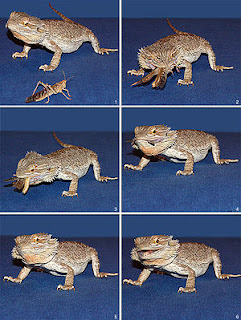How to Care for the Longest Bearded Dragon: A Comprehensive Guide for Beginners
The Longest Bearded Dragon: What You Need to Know

Bearded dragons are a popular pet choice for many reptile enthusiasts. These docile creatures are relatively easy to care for, and they make great pets for beginners. However, did you know that there are different types of bearded dragons, including the longest bearded dragon?
The longest bearded dragon, also known as the giant bearded dragon, is a particular breed of bearded dragon that can grow up to 30 inches long. This type of bearded dragon is relatively rare and has unique care requirements compared to other bearded dragons. If you’re considering getting a longest bearded dragon as your pet, read on to learn how to care for them properly.
Housing Requirements for Longest Bearded Dragons

Longest bearded dragons require a spacious and comfortable habitat to thrive. A standard 40-gallon tank is the minimum size that should be considered, but a 55-gallon or larger is ideal. The tank should have a screen top to ensure proper ventilation. You should also include a secure lid, as bearded dragons are natural escape artists, and this breed is no exception.
Make sure the tank has different areas for basking, hiding, and climbing. Provide a basking area with a heat lamp that maintains a temperature of 95-110°F during the day (with a basking spot of 110-120°F), as well as a cooler area to retreat when needed. You should also include a UVB light source to help your pet absorb calcium and prevent metabolic bone disease.
Feeding and Nutrition

Longest bearded dragons are omnivores, which means they eat both plants and animals. A varied diet is crucial to maintain their health.
Offer a mix of live insects such as crickets, mealworms, and dubia roaches. These should be dusted with a calcium and vitamin D3 supplement twice a week. Bearded dragons can also eat fresh vegetables such as collard greens, kale, and carrots, as well as fruits like strawberries, raspberries, and mango in moderation. You should also ensure that your longest bearded dragon has access to clean and fresh water at all times.
Temperament and Interaction

Longest bearded dragons are known for being friendly and docile. They make perfect pets for beginners and families with children. However, it’s essential always to supervise any interaction with your pet. Handle your longest bearded dragon gently and frequently to help socialize them and avoid them from becoming aggressive or stressed.
While handling your pet, always support their body and avoid grabbing them by their tail or limbs. You should also avoid picking up your pet by surprise or approaching them from above, as this can scare them and lead to accidents.
Health and Illnesses
Longest bearded dragons are generally healthy pets. However, like all living creatures, they can develop health issues or illnesses. Always keep an eye on your pet’s behavior and check for any signs of illness, such as lethargy, lack of appetite, diarrhea, or respiratory issues.
If you notice any of these symptoms, seek veterinary care as soon as possible. It’s also recommended to take your pet for regular check-ups to ensure they receive the necessary health care and treatments.
Conclusion
Longest bearded dragons are fascinating and unique pets that require specific care and attention. By providing a spacious and comfortable habitat, a varied and nutritious diet, affectionate interaction, and proper health care, you can ensure that your longest bearded dragon remains healthy and happy for many years to come.
